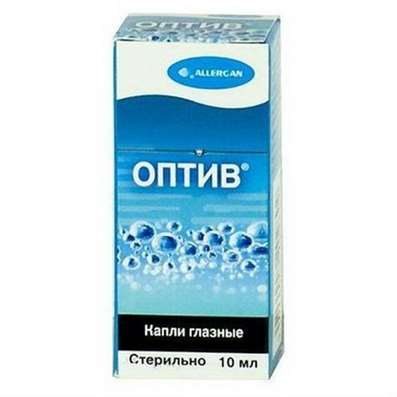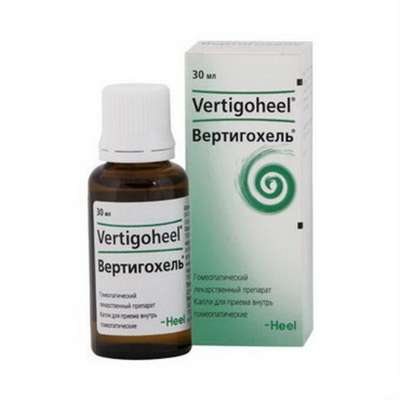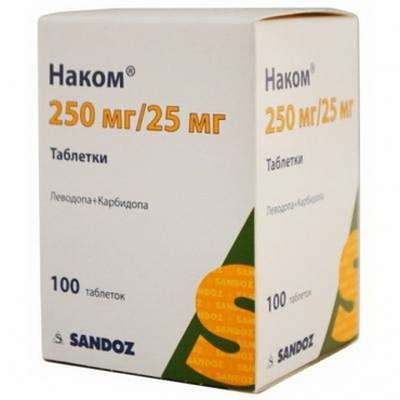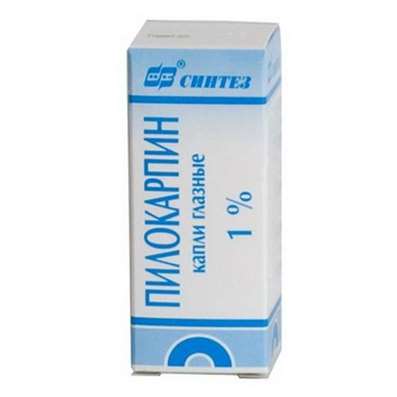Instruction for use: Warfarex
I want this, give me price
Dosage form: tablets
Active substance: Warfarinum
ATX
B01AA03 Warfarin
Pharmacological groups
Anticoagulants
The nosological classification (ICD-10)
I21 Acute myocardial infarction: Myocardial infarction in the acute phase; Acute Myocardial Infarction; Myocardial infarction with pathologic Q wave and without; Myocardial infarction complicated by cardiogenic shock; Infarction left ventricular; Transmural myocardial infarction; Myocardial infarction netransmuralny (subendocardial); Netransmuralny myocardial infarction; Subendocardial myocardial infarction; The acute phase of myocardial infarction; Acute myocardial infarction;Sub-acute phase of myocardial infarction; Subacute phase of myocardial infarction; Thrombosis of the coronary arteries (the arteries); Threatened myocardial infarction; Myocardial infarction without Q wave
I26.9 Pulmonary embolism without mention of acute pulmonary heart: pulmonary infarction
I48 Atrial fibrillation and flutter: Permanent atrial tachyarrhythmias; Relief frequent ventricular rate during atrial flutter or blink; atrial fibrillation; Paroxysm of atrial fibrillation and flutter; Paroxysm of atrial fibrillation; Paroxysmal atrial fibrillation; Atrial premature beats; Tahiaritmicheskoy atrial fibrillation; Tahisistolicheskoy atrial fibrillation; auricular flutter; Life-threatening ventricular fibrillation; Atrial fibrillation; Chronic atrial fibrillation; supraventricular arrhythmia; Paroxysmal atrial fibrillation and flutter; Paroxysmal fibrilloflutter; Atrial premature beats
I81 portal vein thrombosis: portal vein thrombosis
I82 Embolism and thrombosis of other veins: Recurrent venous thrombosis; Postoperative thrombosis; Venous thrombosis; Acute venous thromboembolism; Recurrent vein thrombosis; Venous thrombosis; Thrombosis of veins of internal organs; Venous thrombosis; Deep vein thrombosis; Thrombosis of blood vessels; Vascular thrombosis; Thrombosis of veins; Deep vein thrombosis; Thromboembolic diseases; Thromboembolism of veins; Severe venous thrombosis; Embolism; Embolism of veins; Thromboembolic complications
T82.9 Complication associated with cardiac and vascular prosthesis, implant and graft, unspecified
Composition and release form
Sodium warfarin (in the form of clathrate) 1 mg; 3 mg; 5 mg
Auxiliary substances: lactose; microcrystalline cellulose; Crospovidone; Magnesium stearate; Dyes - indigocarmine in tablets of 3 mg and Ponso 4R in tablets of 5 mg each
In plastic bottles of 30 or 100 pcs .; In a pack of cardboard 1 bottle.
Description of dosage form
Tablets of 1 mg: round plano-cylindrical tablets of white color, with a bevel.
Tablets of 3 mg: round plano-cylindrical tablets of blue color with darker inclusions, with a facet and a risk.
Tablets of 5 mg: round planocylindrical pills of light pink color with darker patches, with a facet and a risk into four parts.
Pharmachologic effect
Mode of action - Anticoagulant.
Pharmacodynamics
Warfarex® belongs to the group of anticoagulants - drugs that prevent blood clotting, and is intended for long-term use. Has an indirect anticoagulant effect, inhibiting in the liver the synthesis of a number of factors involved in the regulation of the process of blood coagulation. Warfarex® prevents the formation of new blood clots and prevents the growth of already formed blood clots.
Pharmacokinetics
The preparation is a racemic mixture of stereoisomers R and S. Stereoisomer S is 2-5 times more active than stereoisomer R, but its effect is less prolonged. Warfarex® (warfarin) is completely absorbed from the digestive tract. Cmax in the blood is reached 4 hours after ingestion. The concentration in the blood plasma is 1-5 μg / ml (0,003-0,015 mmol / l). It binds to blood proteins at 97-99%. Warfarex® (warfarin) undergoes chemical transformations in the liver with the participation of a system of microsomal enzymes containing cytochrome P450, with the formation of inactive and inactive metabolites. It is excreted mainly with urine (92% in the form of metabolites, the minimum part in unchanged form) and in a small amount with bile. T1 / 2 after a single oral intake - 20-60 (an average of 40) h.
There are no significant changes in the pharmacokinetics of Warfarex® (warfarin) in elderly patients. It was found that patients in this group are more sensitive to anticoagulants, but the nature of this phenomenon is not clear. When the liver function is violated, the synthesis of clotting factors decreases, and the metabolism of Warfarex® (warfarin) slows down, which leads to an increase in its inhibitory effect on blood coagulation.
Indications for Warfarex
Prevention and treatment of diseases caused by the formation of blood clots in the vessels:
Deep vein thrombosis;
Thromboembolism of the lungs;
Atrial fibrillation;
Myocardial infarction;
Prosthetics of heart valves.
Contraindications
Hypersensitivity to the components of the drug;
Bleeding (or threat of its development) with some serious diseases;
Bacterial endocarditis;
Severe insufficiency and severe liver or kidney disease;
Obstructive jaundice;
diabetes;
Acute DVS-syndrome;
Deficiency of proteins C and S;
Hemorrhagic diathesis;
Thrombocytopenia;
Peptic ulcer of the stomach and duodenum in the stage of exacerbation;
Hemorrhage in the brain;
alcoholism;
Severe arterial hypertension;
Recently transferred or suspected complex operations and diagnostic procedures;
Inadequate assessment of the state of the coagulation system by laboratory methods;
children.
Pregnancy and breast-feeding
Warfarex® should not be given to pregnant women due to an identified teratogenic effect, the development of bleeding in the fetus and its death.
The drug is excreted in mother's milk in small amounts and has almost no effect on blood coagulation in the child, so this medicine can be used during lactation, however it is advisable to refrain from breastfeeding during the first 3 days of therapy with warfarin.
Side effects
The most common side effects observed during treatment with anticoagulants are bleeding and hemorrhage into various organs and tissues. The possible risk of these side effects can be significantly reduced, strictly following the recommendations of the doctor related to taking Warfarex®.
In some cases, treatment with anticoagulants can cause blood circulation disorders in the extremities or internal organs. About the violation of blood circulation is most often indicated by pains and dark red color of the skin of the toes. If these symptoms appear, consult a doctor immediately.
Other rare side effects are skin allergic reactions (itching, urticaria, dermatitis), nausea, vomiting, diarrhea, abdominal pain, impaired liver function (elevated levels of hepatic enzymes in the blood, jaundice), fever, general weakness, changes in blood picture, Transient alopecia.
Interaction
The high content of vitamin K in food (spinach, broccoli, lettuce and other leafy vegetables) can reduce the effect of Warfarex®. However, one should not change the nature of food too sharply, use vitamins and food supplements without consulting a doctor.
Smoking can reduce the anticoagulant effect of the drug.
The effect of Warfarex® can change under the influence of a large number of drugs.
NSAIDs, dipyridamole, valproic acid, cytochrome P450 inhibitors, cimetidine, chloramphenicol, laxatives - increase the risk of bleeding. Combined use of these drugs and Warfarex® should be avoided (cimetidine can be replaced with ranitidine or famotidine). If it is necessary to treat chloramphenicol, anticoagulant therapy may be temporarily discontinued. Diuretics can reduce the effect of anticoagulants (in the case of pronounced hypovolemic action, which may lead to an increase in the concentration of coagulation factors). Weaken the action: barbiturates, vitamin K, glutetimide, griseofulvin, dicloxacillin, carbamazepine, mianserin, paracetamol, retinoids, rifampicin, sucralfate, phenazone, cholestyramine. Increase the effect: allopurinol, amiodarone, anabolic steroids (alkylated at the C-17 position), acetylsalicylic acid and other NSAIDs, heparin, glibenclamide, glucagon, danazol, diazoxide, disopyramide, disulfiram, isoniazid, ketoconazole, clarithromycin, clofibrate, levamisole, metronidazole, Miconazole, nalidixic acid, nilutamide, omeprazole, paroxetine, proguanil, oral hypoglycemic agents - sulfanilamide derivatives, sulfonamides, tamoxifen, thyroxine, quinine, quinidine, fluvoxamine, fluconazole, fluorouracil, quinolones, chloral hydrate, chloramphenicol, cephalosporins, cimetidine, erythromycin, ethacrynic acid , Ethanol. When using Warfarex ® in combination with the above drugs it is necessary to monitor the INR at the beginning and end of treatment and, if possible, 2-3 weeks after the start of therapy. When using drugs that can increase the risk of bleeding due to a decrease in normal coagulation (inhibition of clotting factors or liver enzymes), the strategy of anticoagulant therapy should be determined by the possibility of conducting laboratory monitoring. If frequent laboratory monitoring is possible, then, if necessary, a dose of Warfarex® can be reduced by 5-10% if necessary. If laboratory monitoring is difficult, then treatment with Warfarex® should be discontinued if necessary.
Dosing and Administration
Inside, once a day, preferably at the same time of day. The dose, mode and duration of the Warfarex® application are determined for each patient individually, in accordance with the severity of the disease and the results of the blood clotting control (MNO). Without the permission of the doctor, you cannot arbitrarily change the dose or stop treatment with Warfarex®.
The initial dose is 2.5-5 mg per day for the first 2 days, then it is gradually regulated in accordance with the individual patient's blood coagulation reaction (MNO). After reaching the desired level of INR (2.0-3.0, and in some cases 3.0-4.5), a maintenance dose is prescribed.
Weakened or at-risk older patients are prescribed lower initial doses and are careful when increasing them. Warfarex® children are usually not prescribed.
At the beginning of the treatment laboratory monitoring of international normalized ratio is performed every day, for the next 3-4 weeks, control is carried out 1-2 times a week, later - every 1-4 weeks. More frequent additional control is necessary in cases where the patient's health condition changes, before the planned operation or other procedure, and when any other medication is prescribed or canceled.
Overdose
Symptoms of chronic intoxication: bleeding from the gums, epistaxis, excessive menstrual bleeding, severe or prolonged bleeding with minor superficial injuries, bleeding in the skin, the presence of blood in the urine and feces, etc.
Treatment: with minor bleeding it is necessary to reduce the dose of the drug or stop treatment for a short time. In case of development of severe bleeding, transfusion of the concentrates of factors of the prothrombin complex, or fresh frozen plasma, or whole blood.
Special instructions
The use of anticoagulants increases the risk of bleeding. To monitor the state of the blood coagulation system, during the treatment with Warfarex®, you should visit the doctor regularly and perform the prescribed tests.
When contacting a doctor, dentist or pharmacist, you must tell them that you are taking Warfarex®.
You should consult a doctor if digestion problems occur, accompanied by diarrhea (diarrhea), fever.
Pregnancy during treatment with Warfarex® is highly undesirable, so effective methods should be used to prevent it.
It is necessary to be cautious when handling acute and traumatic objects, to avoid activities associated with the risk of injury and subsequent bleeding.
During treatment, it is necessary to refrain from using ethanol (the risk of developing hypoprothrombinemia).
The safety of the drug in children in clinical studies has not been adequately studied.
Data on the adverse effect of Warfarex® on the ability to drive vehicles and service other mechanisms are not available.
Patients with lactose intolerance should bear in mind that 1 table. Varfarex® contains 106-112 mg of lactose.
Storage conditions of the drug Warfarex
In the dark place at a temperature of no higher than 25 ° C.
Keep out of the reach of children.
The shelf life of the drug Warfarex
Tablets 1 mg - 2 years.
Tablets 3 mg - 4 years.
Tablets 5 mg - 4 years.
Do not use beyond the expiration date printed on the package.

 Cart
Cart





